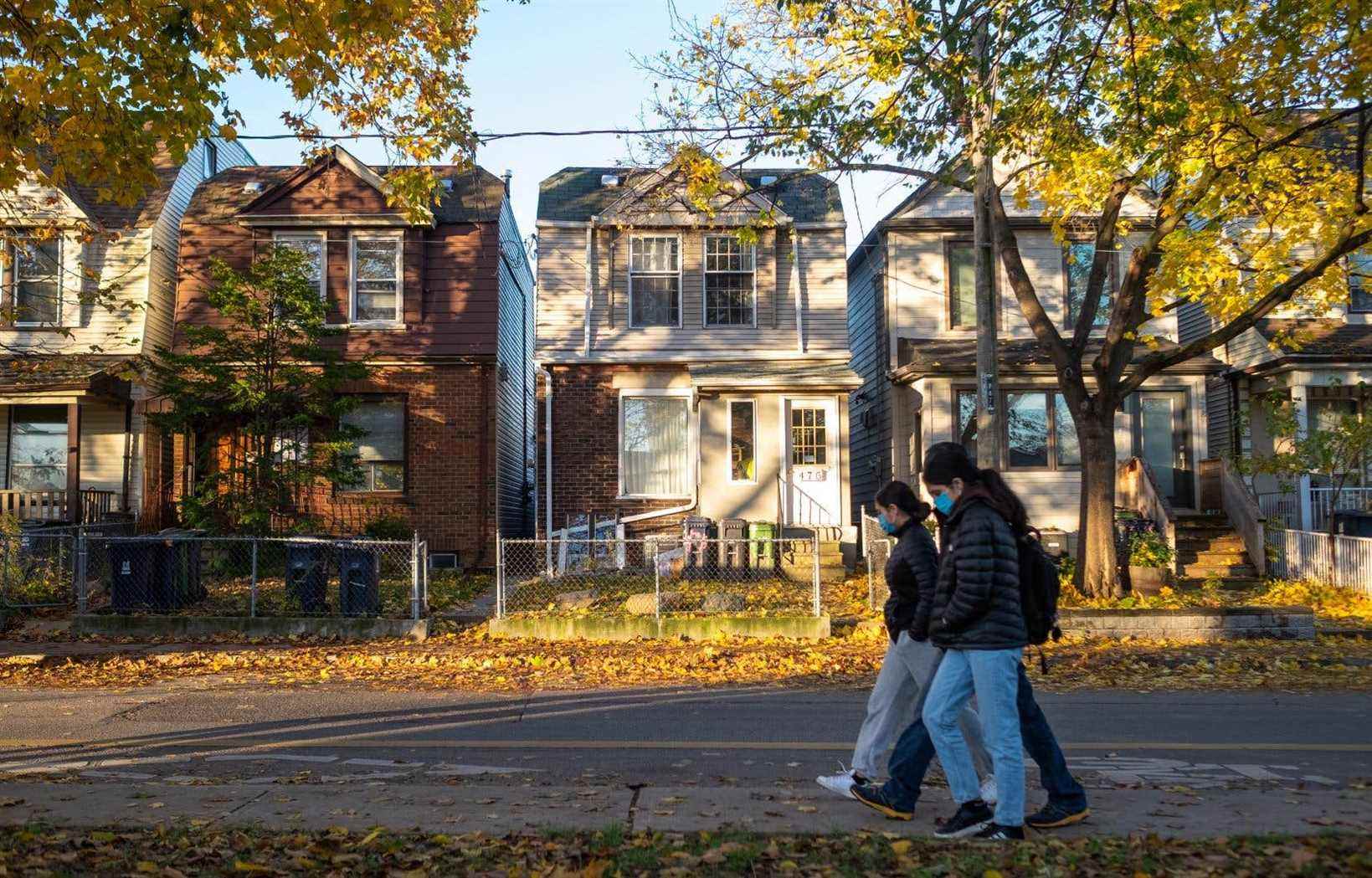The sought after triplexes and quadruplexes of Quebec urban centers inspire Toronto, where it is possible to buy a single-family home a stone’s throw from shopping streets similar to Sainte-Catherine. The planners of the largest municipality in Canada produced their directions for the construction of “plexes” in July 2020, but progress is being made slowly, despite the housing crisis hitting the city.
The needs for this type of housing are significant, according to various experts. The average price of a home is $ 1.2 million, forcing hundreds of Torontonians to move elsewhere.
There is currently approximately one single family home for every 10 Toronto residents. These houses represent 24% of the Toronto real estate stock, against 7% of the Montreal stock.
According to the Rentals.ca monthly report, a Torontonian must spend an average of $ 2006 per month for a one-bedroom apartment, about $ 500 more than in Montreal. “People are leaving [mon] neighborhood because there is no affordable housing, ”said City Councilor Brad Bradford.
The fringe of the housing stock which excludes single-family homes and high-rise apartment buildings is called “missing middle” in the Queen City. The report Expanding Housing Options in Neighborhoods, published last summer, is one of the first manifestations of the administration’s vision in this area.
However, many financial, technical and cultural obstacles prevent the construction of this type of building, which the City is trying to remedy with the help of the report. Between 2016 and 2020, only 4,000 “missing middle” units were built in Toronto.
Individual efforts
While waiting for the changes recommended in the report, the projects of the “missing medium” type are the fruit of the will of architects like Alejandro Lopez, a graduate of Laval University. The latter recently designed a quadruplex that will replace a semi-detached house located in the Little Italy district.
His client, however, had to pay $ 180,000 in municipal costs for the transformation of his house in poor condition, not to mention its purchase price of $ 750,000, a godsend for the neighborhood. “If I had paid 1.5 million and had to pay 2 million in construction costs, as I am doing now, it would not have been profitable,” explains client Nigel Churcher.
Brad Bradford, a former city planner with the City of Toronto, admits that city fees discourage some entrepreneurs. “It’s no surprise that we don’t see a lot of these projects,” he says. The counselor is now working on a “missing environment” project in his district that could serve as a roadmap for other similar projects elsewhere in the city. “I don’t think we necessarily need to give incentives to build ‘missing middle’ buildings, but we have to remove the barriers and create a logical process. “
Restrictive zoning
Nigel Churcher had to put his project forward to the local adjustment committee, a citizen panel of four to five people that carefully studies construction requests that diverge from the existing zoning. For example, a resident must obtain the green light from the committee if the height of his new building exceeds the limit provided for in the zoning by 50 centimeters.
These consultations can last at least three months, if the decision is not appealed as was the case for 453 cases since 1er January 2020. In such situations, “the costs continue to rise,” explains Alejandro Lopez. For larger projects, like the ones architect Naama Blonder is working on, rezoning requests are needed, an even more tedious process than that of the adjustment committee. “It shouldn’t be that difficult to build this type of project,” says the architect.
Born from the municipal amalgamation of 1998, Toronto’s urban plan left little room for the construction of buildings in the “missing middle”: almost a third of the city’s area is reserved for single-family homes, which is called the “Residential Detached” zoning.
One of the main long-term goals is to change the master plan and zoning bylaws to allow the construction of “missing middle” buildings where they are not currently permitted, says Gregg Lintern. , the city’s chief planner, in an email. The municipal council will then have to approve the change.
Cultural influence
The obstacles to the construction of medium-sized buildings are also cultural. According to various stakeholders, residents’ associations have a strong influence.
In October, a decision by the adjustment committee on a planned “missing environment” project north of the city center was, for example, delayed due to pressure from the local residents’ association. Each real estate project becomes a political issue, criticizes architect David Grant-Rubash, who has designed a project of the “missing environment”.
As part of the drafting of the report Expanding Housing Options in Neighborhoods, the City surveyed 241 residents’ associations. Seventy-nine percent of respondents said that diversifying housing types in neighborhoods – that is, outside of major avenues and downtown – would affect the “character” of their neighborhood. district.
These associations often oppose “missing environment” projects in the name of protecting “character”. But the definition of the word is “fuzzy”, thinks Alejandro Lopez. “The ambiguity of the word can and has been problematic for City employees, residents, elected officials, members of the courts, when considering project proposals,” writes Gregg Lintern, chief city planner for the city. . The influence of the population is sometimes “insane”, drops Naama Blonder.
